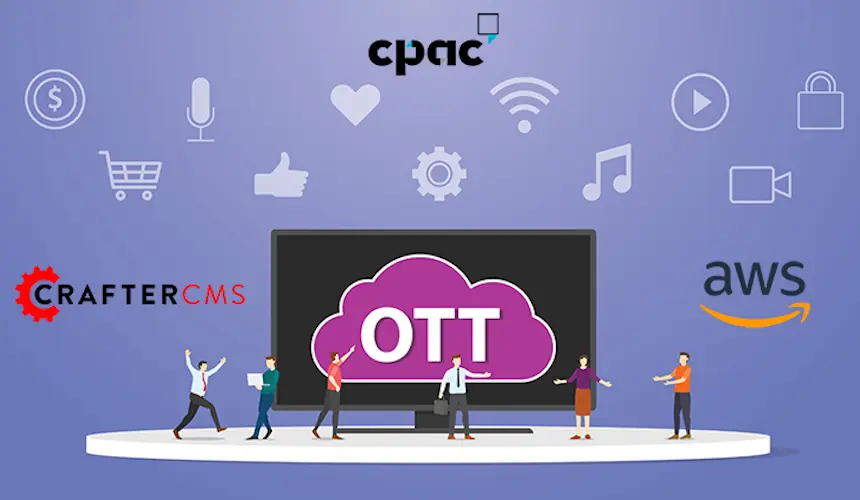How to Marry a Frontend-as-a-Service to a Headless CMS

Amanda Jones

If we go back 15 years ago, simply having an eCommerce presence would have been enough for an enterprise company. After all, managing eCommerce capabilities was just another portion of the suite system they were already using that contained everything they needed out-of-the-box.
Fast-forward to today, and eCommerce experiences have evolved dramatically, with global eCommerce sales predicted to reach $6.7 trillion by 2024. For eCommerce brands, these changes have been mainly due to the new standards set by companies like Amazon and a need to keep up.
However, at the same time, enterprises also recognize that the legacy infrastructure they were once dependent on can no longer satisfy their internal team needs or their external customer requirements. The need to deliver multi-channel experiences crushed the usefulness of legacy monolithic systems. In its place, more robust and flexible infrastructure has seen more and more businesses embrace headless architecture and the flexibility it provides. Yet, when it comes to managing modern eCommerce experiences, headless alone isn’t always enough.
Today we’ll introduce you to the concept of frontend as a service (FEaaS) and explain how brands can use it alongside a headless plus CMS to deliver an exceptional customer experience.
What Is Frontend as a Service (FEaaS)?
Frontend as a service is a new approach to building, testing, and delivering modern user experiences. Specifically, FEaaS provides:
- Prebuilt, composable front end widgets
- Prebuilt integrations and connectors to backends
- Studio tools to assemble them
- Infrastructure to deploy and operate them
Best of all, it allows you to combine different frontend components in a modular way to create digital experiences faster and more cost-efficiently.
As digital experiences, particularly those related to eCommerce, have evolved, it has placed additional pressure on brands to quickly spin up shopping interfaces that offer omnichannel content-driven experiences that are personalized to customer preferences and localized to their demographics. In order to meet those requirements, brands need the speed and flexibility that frontend as a service offers.
How it Works
A modern eCommerce application includes some standard core functionality such as search, a shopping cart and checkout, a chatbot to help answer visitor questions, content in the form of images, videos, product descriptions, and more. Rather than create all of these elements from scratch, developers can use frontend as a service to quickly combine different modules and create a unique experience.
Why Brands Are Considering Frontend as a Service (And the Benefits of It)
Today’s customer journeys are far more complex than ever before, and businesses are embracing composable approaches like frontend as a service to keep up. Here are some of the benefits of adopting this concept:
Ease of Use
Frontend as a service uses themes and widgets to enable the easy design of eCommerce storefronts.
Faster Time to Market
Whereas monolithic commerce solutions might have been slow to adapt to the changes as mentioned above, using frontend as a service allows brands to quickly create eCommerce storefronts that are built for the modern age.
Decrease Developer Workload
Since developers no longer have to create every element of the shopping experience from scratch, they can decrease their workload and focus on other tasks that help drive revenue. This is important for CI/CD too, as UX trends are fickle. What looks good today is tired in a year or two. FEaaS is a cost effective way to stay up to date.
Future-proof Architecture
Frontend as a service separates the frontend functionality from the backend and integrates them using APIs. This API-based architecture makes connections with new technologies much more straightforward, even if they aren’t available yet.
Increased Scalability
The modular approach of FEaaS supports greater scalability as it comprises different microservices components and not a tightly coupled monolithic architecture.
How a Headless CMS Combines With Frontend As a Service
A headless CMS enables brands to deliver content to any device, whether a website, customer portal, Alexa device, AR/VR goggles, mobile application, or anything else. Here’s how it combines with frontend as a service.
Integrates eCommerce Backend
First of all, a headless CMS can leverage APIs to connect frontend as a service with an eCommerce backend. Frontend as a service is critical for creating an engaging shopping experience but the backend functionality of processing orders, managing inventory, and more all needs to be handled with an eCommerce backend.
Manages Content Marketing Needs
A headless CMS can be used to manage the content marketing initiatives that support frontend as a service. Product descriptions, images, videos, and more can be orchestrated using the CMS and then delivered to the frontend as a service interface using APIs.
APIs to Connect with FEaaS vendors
While a headless CMS can facilitate headless commerce and allow you to create content-driven experiences, it’s not always simple for less technical users to manage on their own. Marketers and eCommerce designers may find the shift from a traditional drag and drop interface with previews difficult to manage. However, a headless CMS can again leverage APIs to connect to frontend as a service vendors that provide the user-friendly templates, components and functionality they need.
How CrafterCMS Helps Deliver Your Digital Experience with a FEaaS
A headless CMS can be a crucial partner in embracing frontend as a service and delivering engaging shopping experiences. However, many headless CMSs lack a sound authoring system. If they have one, it’s typically only sufficient for entering content, not composing a complete digital experience that includes content, video, personalization, and localization.
On the other hand, CrafterCMS is a headless “plus" CMS that provides all of the advantages of a pure headless CMS and so much more. This includes the framework-agnostic features that frontend developers want to use today, allowing them to leverage React, Next.js, Angular, Vue.js, Nuxt.js or any modern JavaScript framework to create experiences on any device.
Even better, CrafterCMS includes Crafter Studio, a best-in-class content authoring application to give you the drag and drop tools, in-context previews, and more you need for frontend as a service. Crafter Studio is an out-of-the-box FEaaS for content-rich digital experiences built on CrafterCMS. Combined with prebuilt plugins and blueprints from the Crafter Marketplace, Crafter Studio enables rapid development of multi-channel digital experiences, including those for eCommerce.
However, CrafterCMS is also an API-first content platform, allowing you to connect to any other frontend as a service vendor if you desire. If you want to leverage a user-friendly interface that includes no-code / low-code features, CrafterCMS provides everything you need, whether you wish to use Crafter Studio and/or a third-party FEaaS vendor.
If you want to see more about how CrafterCMS can help to build engaging eCommerce experiences, then watch our Webinar - Future of E-Commerce: Progressive Web Apps, JAMstack, and Headless.
Related Posts

Websites Are Dead?

Mike Vertal

No-Code Experience Building for Marketers & Designers

Amanda Lee

The Future of Web Experiences: From Browsing and Searching to Conversational AI

Mike Vertal

Is Your CMS MACH-Ready? A Practical Guide for Enterprise Architects

Sara Williams
Related Resources
-

CrafterCMS at eBay: The Universal Content Platform for eBay.com
Webcast
-

Personalized Digital Experiences for a Cruise Liner
Webcast
-

Introducing CrafterCMS v4.0
Webcast
-

Modernizing Video Delivery and Content Management at CPAC, A Canadian Nationwide Broadcaster
Webcast
-

Building React Apps on a Headless CMS
White Paper





